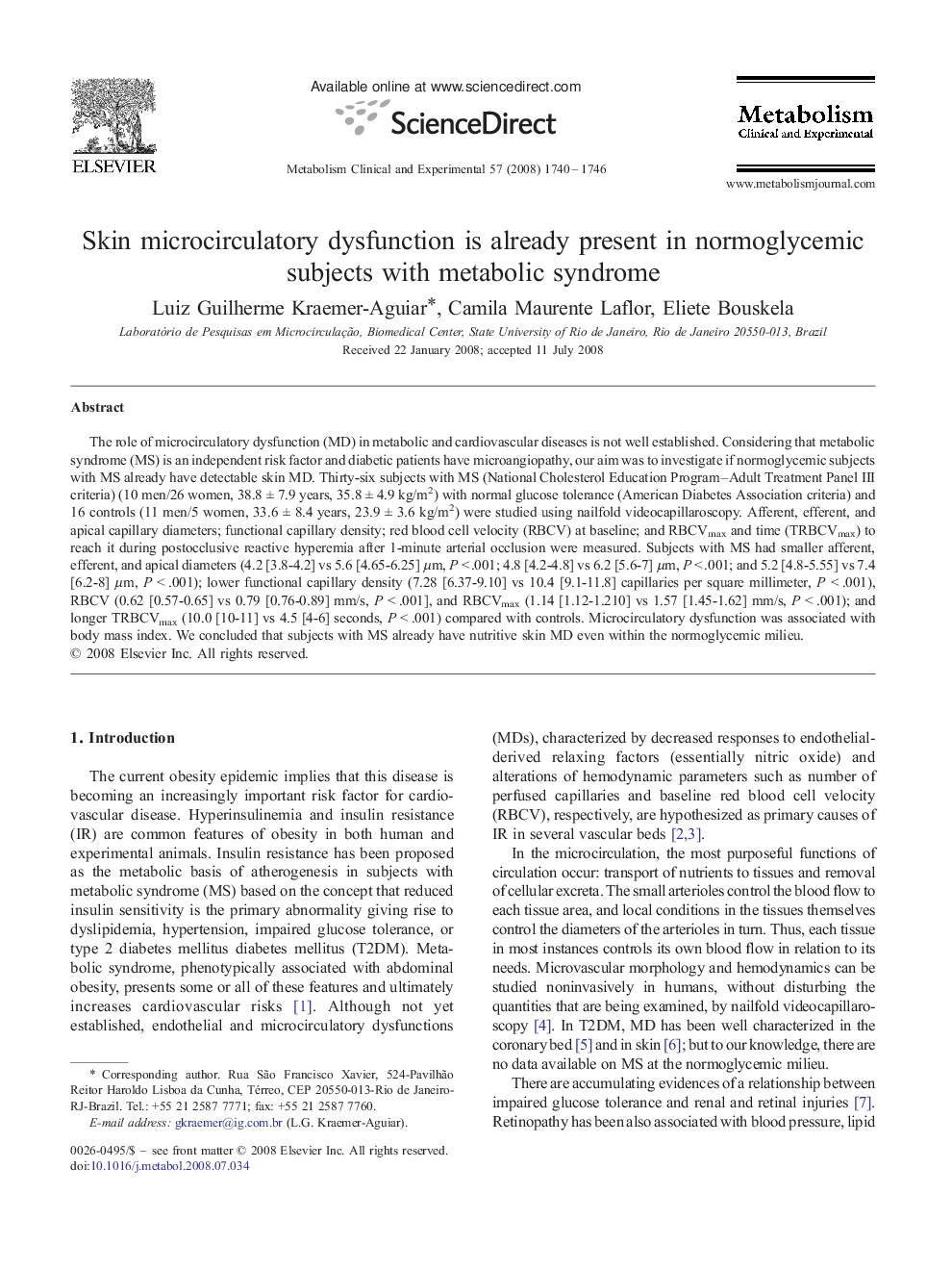| Article ID | Journal | Published Year | Pages | File Type |
|---|---|---|---|---|
| 2806563 | Metabolism | 2008 | 7 Pages |
The role of microcirculatory dysfunction (MD) in metabolic and cardiovascular diseases is not well established. Considering that metabolic syndrome (MS) is an independent risk factor and diabetic patients have microangiopathy, our aim was to investigate if normoglycemic subjects with MS already have detectable skin MD. Thirty-six subjects with MS (National Cholesterol Education Program–Adult Treatment Panel III criteria) (10 men/26 women, 38.8 ± 7.9 years, 35.8 ± 4.9 kg/m2) with normal glucose tolerance (American Diabetes Association criteria) and 16 controls (11 men/5 women, 33.6 ± 8.4 years, 23.9 ± 3.6 kg/m2) were studied using nailfold videocapillaroscopy. Afferent, efferent, and apical capillary diameters; functional capillary density; red blood cell velocity (RBCV) at baseline; and RBCVmax and time (TRBCVmax) to reach it during postocclusive reactive hyperemia after 1-minute arterial occlusion were measured. Subjects with MS had smaller afferent, efferent, and apical diameters (4.2 [3.8-4.2] vs 5.6 [4.65-6.25] μm, P < .001; 4.8 [4.2-4.8] vs 6.2 [5.6-7] μm, P < .001; and 5.2 [4.8-5.55] vs 7.4 [6.2-8] μm, P < .001); lower functional capillary density (7.28 [6.37-9.10] vs 10.4 [9.1-11.8] capillaries per square millimeter, P < .001), RBCV (0.62 [0.57-0.65] vs 0.79 [0.76-0.89] mm/s, P < .001], and RBCVmax (1.14 [1.12-1.210] vs 1.57 [1.45-1.62] mm/s, P < .001); and longer TRBCVmax (10.0 [10-11] vs 4.5 [4-6] seconds, P < .001) compared with controls. Microcirculatory dysfunction was associated with body mass index. We concluded that subjects with MS already have nutritive skin MD even within the normoglycemic milieu.
